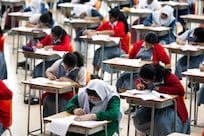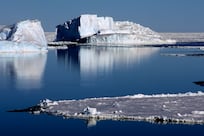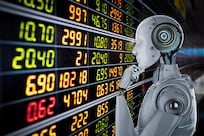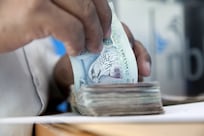The UAE endorsed the Paris Climate Agreement in 2015 and last year ratified the accord to limit the increase in the global average temperature to no more than 2°C above pre-industrial times, and preferably to just 1.5°C. That so many other countries have done likewise demonstrates that the global consensus for addressing climate change remains intact. Yet the aims of the agreement can be achieved only through on-the-ground action by companies, investors and consumers.
The 10th World Future Energy Summit (WFES) this week in Abu Dhabi provides companies from across the globe with a chance to showcase innovation and solutions for improving energy efficiency and decarbonising the energy supply – the central means for addressing emission reduction for most countries.
Investor attention turned last year to how to assess whether countries are on track to meet their Paris pledges, and how ready companies are to address the risks and opportunities arising from the transition to a low-carbon economy.
HSBC asked 277 corporate treasurers and finance directors, 276 investors and about 40 non-governmental organisations about their attitudes to sustainable finance in November and the results point to a greater emphasis on companies disclosing more about how they are addressing climate change.
The survey revealed that investors are ahead of corporates in considering how the Paris Agreement will affect them, but as yet they are ill-equipped to make good decisions on the relative strengths of individual holdings in relation to these factors, because of inadequate disclosure. The panels at WFES should thus address disclosure.
The UAE’s climate ambition is based on an economic diversification strategy that addresses greenhouse gas emissions and builds in resilience to the consequences of warmer temperatures. This should be delivered through the goals for national development set out in the Vision 2021 programme, with the government’s Green Growth Strategy covering energy goals, energy efficiency and resilience.
So far, growth in the region has been fuelled by oil and gas, with the demand for both doubling in the past 15 years. But CO² from energy has increased by 59 per cent over that period and renewables contributed just 0.1 per cent to the energy mix in 2014.
The region’s growth and dependence on fossil fuels, especially high-carbon oil, have resulted in rising CO2 levels.
While the amount of energy used for GDP has remained relatively constant since 1990, the energy supply has not been sufficiently decarbonised by switching to renewable sources, to be aligned with global climate goals.
That is set to change, however, as the UAE embarks on the strategy set out in the climate pledge it submitted to the UN ahead of the Paris talks. This initiative requires clean energy to comprise 24 per cent of its total energy mix by 2021.
The plan also focuses on improving the efficiency of energy-intensive industries – that should mean the oil and gas sector further reducing gas flaring. The development of commercial-scale carbon capture, usage and storage is another focus area – a new facility attached to a steel-manufacturing plant will compress and transport gas for use in enhanced oil recovery.
Water management is also crucial for the region and has long been central to planning. Desalination and waste-water reclamation remain key to guaranteeing water security and are written into the climate plan. We are confident the UAE can deliver this plan.
The 2013 WFES was told that water is more important than oil. Perhaps, now the importance of sunshine should be included in that comparison.
The economics of meeting the clean energy target increasingly encourage greater use of solar power. Globally, costs are falling fast, but at the regional level the justification is even clearer. Estimates made in 2014 for the cost of solar delivery in the UAE last year were US$62 per megawatt hour; in fact the most recent solar tender was delivered at $24.
That presents a major opportunity for lowering the emissions profile of the UAE’s power-generation sector to achieve that 24 per cent clean energy goal.
The writer is head of the HSBC Climate Change Centre and is moderating a panel on Tuesday at WFES on Decarbonising Businesses.
business@thenational.ae
Follow The National's Business section on Twitter





